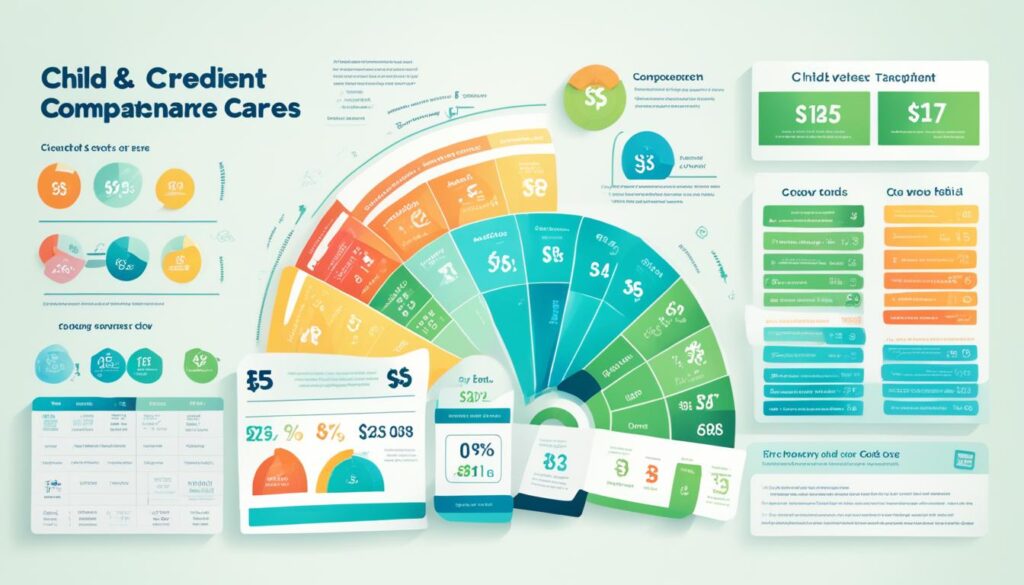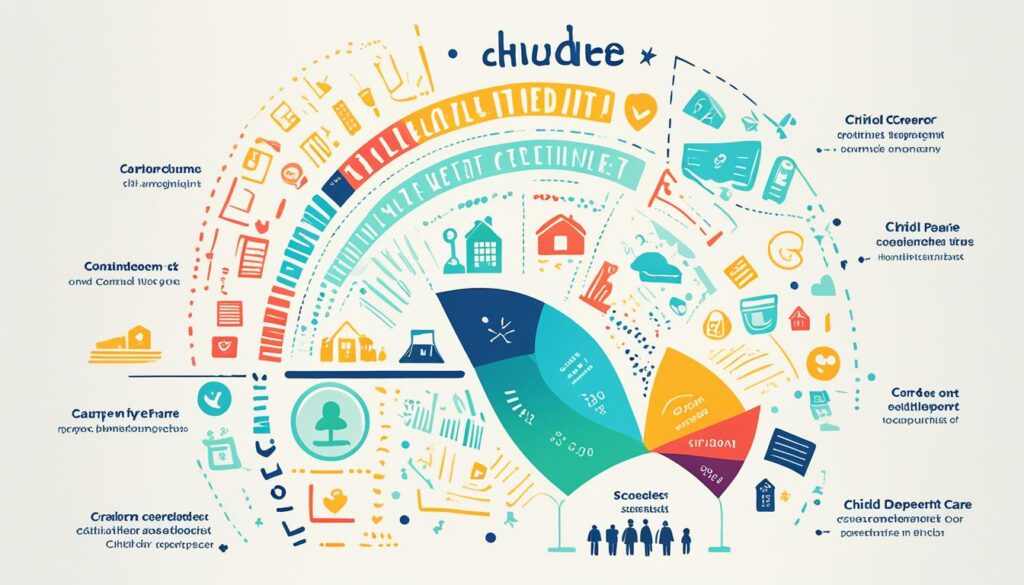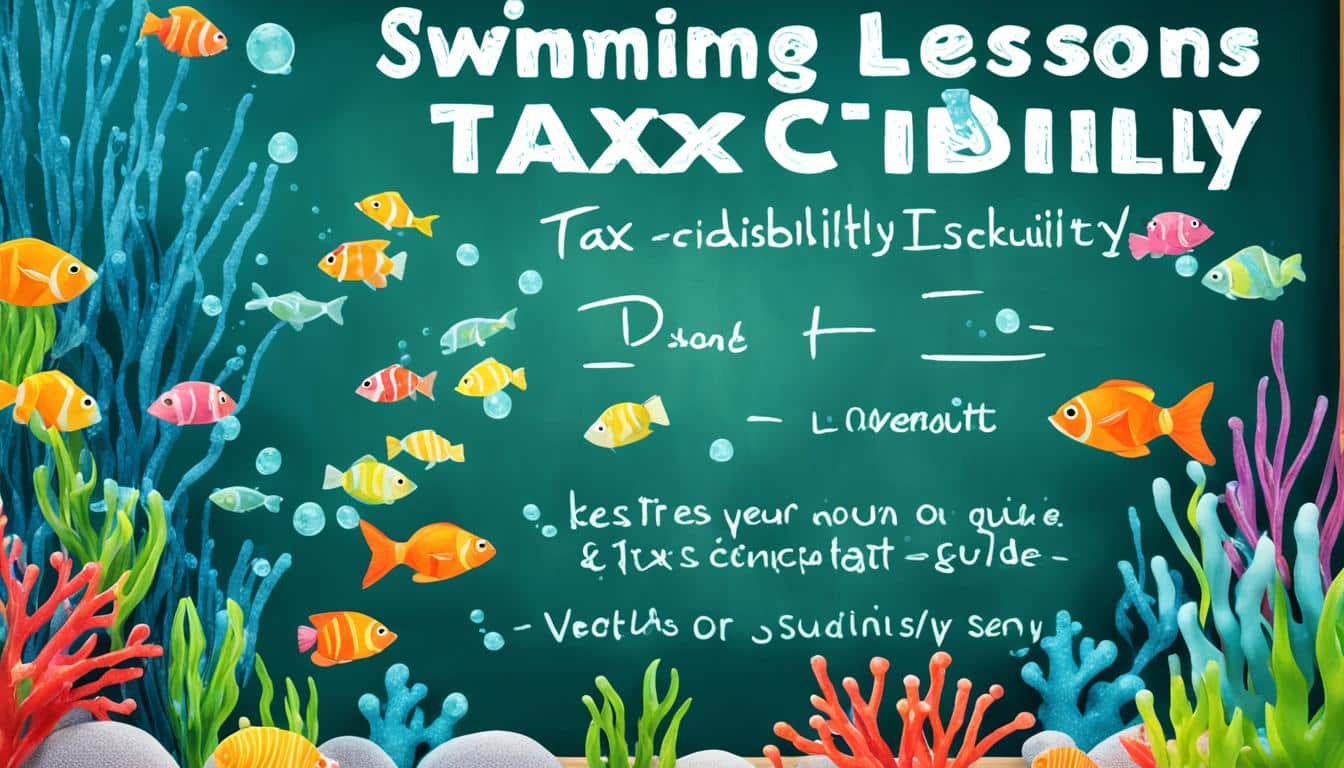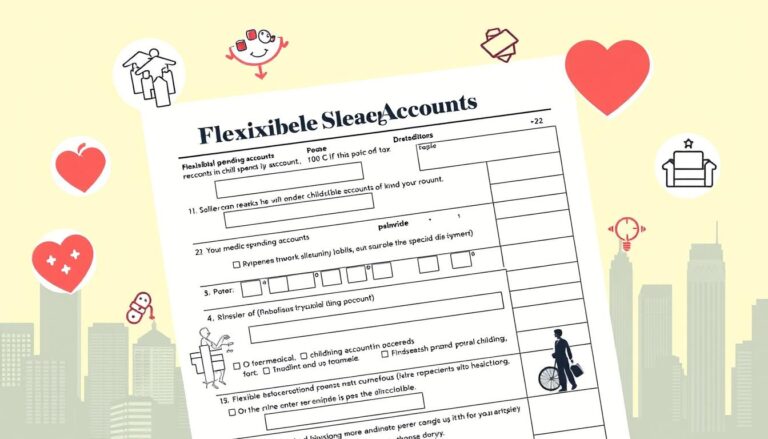Are swimming lessons tax deductible? Can you claim swimming lessons on your taxes? These are questions that many parents and individuals ask when considering the expenses of swim classes. While the answer may not be a simple yes or no, there are certain situations where swimming lessons could potentially be considered a tax deduction.
Let me tell you a story that might help illustrate this. Meet Sarah, a working mom with two kids who are both passionate about swimming. Sarah wants to provide her children with the opportunity to learn swimming and stay safe in the water. However, the cost of weekly swim classes adds up quickly, and Sarah is looking for a way to offset some of these expenses.
One day, Sarah’s friend mentions that she was able to claim her child’s swimming lessons as a tax deduction. Intrigued, Sarah starts researching and discovers that the IRS allows deductions for medical expenses under Section 213 of the Internal Revenue Code. Medical care includes expenses for the diagnosis, cure, mitigation, treatment, or prevention of disease.
Now, while swimming lessons are not specifically mentioned as a deductible expense, there may be instances where they could be considered a deductible medical expense. For example, if a child has a medical condition that requires swimming as part of their therapy or rehabilitation, the cost of their swim classes could potentially be claimed as a tax deduction.
It is worth noting that claiming swimming lessons as a tax deduction requires careful consideration and documentation. Sarah understands the importance of consulting a tax professional or referring to IRS publications for specific guidance on deducting swimming lessons on taxes.
So, if you’re like Sarah, seeking ways to offset the cost of swimming lessons, this guide will provide you with valuable insights on the tax implications of swim class expenses. Let’s dive in!
Key Takeaways
- Swimming lessons may be considered a tax deduction in specific situations where they can be justified as a medical expense.
- Consulting a tax professional or referring to IRS publications is crucial for accurate guidance on deducting swimming lessons on taxes.
- Proper documentation and record-keeping are essential when claiming swimming lessons as a tax deduction.
- Understanding the criteria for medical expenses and the specific requirements of the IRS can help maximize potential tax savings on swim classes.
- While swimming lessons may not always be tax deductible, exploring other tax benefits, such as the Child and Dependent Care Tax Credit or Dependent Care FSAs, can provide additional financial relief for child care expenses.
Understanding Deductible Medical Expenses
When it comes to tax deductions, understanding what constitutes a deductible medical expense is essential. The Internal Revenue Service (IRS) provides a comprehensive list of eligible medical expenses that can be deducted from your taxes. These expenses encompass a wide range of treatments, services, and supplies related to healthcare.
Here are some examples of deductible medical expenses:
- Doctor visits and consultations
- Surgeries and medical procedures
- Prescription medications
- Diagnostic tests and screenings
- Dental care
- Physical therapy
- Medical equipment and supplies
While swimming lessons are not explicitly listed among the deductible medical expenses, there might be situations where they could be considered eligible. If swimming lessons are prescribed as a form of therapy to treat a specific medical condition, and the expenses meet the criteria outlined in Section 213 of the IRS Code, they may be deemed deductible medical expenses.
It is important to consult with a tax professional or refer to IRS publications for specific guidance on deductible medical expenses. They can help you determine whether your swimming lessons qualify as a deductible medical expense and provide guidance on how to proceed with claiming the deduction.
Remember, to ensure compliance with IRS regulations, it is crucial to keep accurate records of all expenses related to medical and dental care. This includes receipts, invoices, and any documentation that supports your claim for deductible medical expenses.
| Expense | Deductibility |
|---|---|
| Doctor visits | Yes |
| Surgeries | Yes |
| Prescription medications | Yes |
| Diagnostic tests | Yes |
| Dental care | Yes |
| Physical therapy | Yes |
| Medical equipment | Yes |
| Swimming lessons | Depends on individual circumstances and qualification as medical care |
As with any tax-related matters, it is prudent to seek advice from a qualified tax professional to ensure you are maximizing your eligible medical expense deductions while adhering to IRS regulations.
Qualifying for the Child and Dependent Care Tax Credit
As a working parent, you may be eligible for the Child and Dependent Care Tax Credit, which can provide valuable tax relief for the expenses you incur in caring for your children. While swimming lessons may not directly qualify for this tax credit, there are other child care expenses that could potentially make you eligible.
According to the IRS, the Child and Dependent Care Tax Credit is specifically designed to assist working parents by offering a tax credit for the costs associated with child care. This credit can help offset a portion of the expenses incurred for child care, making it easier for you to manage your financial responsibilities.
Although swimming lessons may not be covered under the tax credit, you may still qualify for the credit if you have other child care expenses. Some examples of eligible child care expenses that may qualify for the tax credit include:
- Day care expenses
- Nanny services
- Before- and after-school programs
To determine your eligibility for the Child and Dependent Care Tax Credit, it is important to understand the specific requirements and limitations set by the IRS. Consulting with a tax professional can provide you with accurate advice tailored to your individual circumstances.
Child and Dependent Care Tax Credit Eligibility
In order to qualify for the Child and Dependent Care Tax Credit, there are certain criteria that must be met:
- You must have paid child care expenses for a child under the age of 13.
- You and your spouse (if married) must be working or actively looking for work.
- The child care services must be provided by a qualified individual or facility.
The credit amount is based on a percentage of your eligible expenses. The IRS provides different percentages based on your income level, with higher percentages available for lower income levels. It’s important to gather all necessary documentation to accurately calculate your eligible expenses and claim your credit.
While swimming lessons may not directly qualify for the Child and Dependent Care Tax Credit, it’s still worth exploring other child care expenses that may be eligible. By understanding the requirements and limitations of the tax credit, you can ensure you make the most of the tax benefits available to you as a working parent.

| Child and Dependent Care Tax Credit | Qualifying Child Care Expenses |
|---|---|
| Child and Dependent Care Tax Credit Details: | Although swimming lessons may not be covered, other child care expenses such as day care, nanny services, and before- and after-school programs can potentially make you eligible for the tax credit. |
| Eligibility Criteria: | To qualify, you must have paid child care expenses for a child under the age of 13, be working or actively looking for work, and have child care services provided by a qualified individual or facility. |
| Credit Calculation: | The credit amount is a percentage of your eligible expenses, with higher percentages available for lower income levels. Gather all necessary documentation to accurately calculate your eligible expenses. |
The Benefits of Health Flexible Spending Arrangements (FSAs)
Are you looking for a way to manage your medical expenses more efficiently? Health Flexible Spending Arrangements (FSAs) might be the solution you need. With an FSA, you can set aside pre-tax dollars from your income to cover eligible medical expenses, providing you with significant tax advantages.
While FSAs primarily focus on healthcare costs, some employers offer dependent care FSAs as well. This means that you can use the funds in your FSA to reimburse child care expenses, including summer camp fees.
By taking advantage of an FSA, you can potentially save hundreds, if not thousands, of dollars on child care expenses. This tax-advantaged account allows you to use pre-tax dollars, effectively reducing your taxable income and increasing your take-home pay.
To determine if summer camp expenses can be reimbursed through an FSA, it’s essential to review your employer’s FSA program’s specific rules and limits. Each program may have different guidelines, so make sure you understand the terms and conditions before making any claims.
The Benefits of Health FSAs:
- Significant tax advantages by using pre-tax dollars
- Potential savings on child care expenses, including summer camp fees
- Increased take-home pay through reduced taxable income
- Flexible utilization of funds for eligible medical expenses
- Convenience and ease of use through automated payroll deductions
So why miss out on the opportunity to save money on child care expenses? Consider participating in your employer’s health FSA program to take advantage of the many benefits it offers.
Evaluating the Child and Dependent Care Tax Credit vs. Dependent Care FSAs
When it comes to choosing the right tax benefit for child care expenses, it’s essential to compare the Child and Dependent Care Tax Credit against Dependent Care FSAs. Both options offer potential tax savings, but understanding the differences can help you make an informed decision.
The Child and Dependent Care Tax Credit provides a percentage-based reduction in your tax liability based on your eligible child care expenses. The credit can be claimed on your federal tax return, potentially reducing the amount of taxes you owe. However, it’s important to note that the credit has income limits and is gradually phased out as your income increases.
On the other hand, Dependent Care FSAs allow you to set aside pre-tax dollars from your income to pay for eligible child care expenses. By contributing to an FSA, you effectively lower your taxable income. This means you’ll pay less in taxes and have more money available to cover child care costs. Dependent Care FSAs are offered through employers, so it’s crucial to review your employer’s specific FSA program rules and limits.
When deciding which option is right for you, various factors should be considered. Your income level plays a significant role, as the Child and Dependent Care Tax Credit only provides higher percentages for lower-income households. If your income exceeds the limit for claiming the tax credit, a Dependent Care FSA might be a better choice.
Other factors to consider include your family size and individual circumstances. If you have multiple dependents or high child care expenses, a Dependent Care FSA can offer more flexibility, allowing you to contribute a higher amount of pre-tax dollars. Additionally, Dependent Care FSAs can be used to reimburse various child care expenses, such as daycare fees, nanny services, or before- and after-school programs.
When comparing the two options, it’s also important to consider the long-term financial benefits. While the Child and Dependent Care Tax Credit provides immediate tax savings, a Dependent Care FSA allows you to plan and budget for child care expenses throughout the year and take advantage of consistent tax savings.
To help you understand the differences further, here’s a comparison table:
| Child and Dependent Care Tax Credit | Dependent Care FSAs |
|---|---|
| Provides a percentage-based reduction in tax liability | Allows pre-tax contributions to cover child care expenses |
| Income limits and phase-out thresholds apply | Dependent on your employer’s FSA program rules and limits |
| Claims made on your federal tax return | Reimbursements made directly from your FSA |
| May offer higher percentages for lower-income households | Provides consistent tax savings throughout the year |
Remember, choosing the right tax benefit for child care expenses depends on your unique circumstances. It’s recommended to consult with a tax professional to ensure you’re making the most advantageous decision based on your income, family size, and child care expenses.

For example
- If you’re a single parent with a lower income and substantial child care expenses, you may benefit more from the higher percentage-based reduction offered by the Child and Dependent Care Tax Credit.
- On the other hand, if you’re a dual-income household with a higher income and multiple dependents, a Dependent Care FSA could offer greater flexibility and consistent tax savings throughout the year.
Ultimately, the decision should be based on a thorough evaluation of your financial situation, tax obligations, and child care needs. By carefully considering the advantages and limitations of each option, you can choose the tax benefit that maximizes your savings and supports your family’s well-being.
Specifics of the Child and Dependent Care Tax Credit
When it comes to the Child and Dependent Care Tax Credit, understanding the specifics is key. This tax credit provides relief for working parents who incur child care expenses while they are at work or looking for work. To qualify for the credit, you need to meet certain criteria:
- You must have a child or dependent under the age of 13 who requires care.
- Both parents, if married, or a single parent must be working or actively seeking employment.
- You must have incurred child care expenses for qualifying care providers.
The amount of the credit is based on a percentage of your eligible child care expenses. Higher percentages are available for lower income levels, providing greater relief for those who need it most.
Let’s take a look at an example to understand how the credit calculation works:
| Eligible Child Care Expenses | Percentage of Expenses | Maximum Credit Amount |
|---|---|---|
| $4,000 | 20% | $800 |
| $6,000 | 20% | $1,200 |
| $8,000 | 20% | $1,600 |
As you can see from the table above, the percentage of eligible expenses remains constant at 20%. However, the maximum credit amount increases as the amount of eligible child care expenses increases. This means that the more you spend on child care, the higher your potential credit.

Remember, it’s important to consult with a tax professional for personalized advice regarding your specific situation. They can guide you through the eligibility criteria, income limits, and credit calculations to help ensure you’re maximizing the benefits of the Child and Dependent Care Tax Credit.
Exploring the Dependent Care FSA
When it comes to managing child care expenses, the Dependent Care Flexible Spending Account (FSA) can be a game-changer. With this account, you have the opportunity to contribute pre-tax dollars specifically designated for child care expenses. By setting aside pre-tax contributions from your income, you can save money and receive tax benefits.
The Dependent Care FSA can be utilized for a variety of child care costs, including reimbursements for summer camp fees. This means that a portion of your child care expenses can be paid for with pre-tax dollars, leading to significant savings. It’s important to review the specific rules and limits of the FSA program offered by your employer to understand how it can be used for tax-free reimbursement of child care expenses.
The Benefits of the Dependent Care FSA:
- Contributions are made with pre-tax dollars, reducing your taxable income.
- Reimbursements are tax-free, saving you money on child care expenses.
- Flexibility to use funds for a wide range of eligible child care costs, including summer camps.
- Ability to save money on child care expenses, allowing you to focus on providing the best care for your child.
By taking advantage of the Dependent Care FSA, you can make the most of your pre-tax contributions and maximize your savings on child care expenses. It’s important to consult with your employer or benefits administrator to fully understand the specifics of the program and how it can benefit you.
Remember, every dollar saved through pre-tax contributions and tax-free reimbursements can make a big difference in your overall budget. Take the time to explore the Dependent Care FSA and see how it can help you ease the financial burden of child care expenses.
Making Informed Decisions for Tax Relief on Swimming Lessons
When it comes to claiming tax relief on swimming lessons, you need to navigate the complex world of tax regulations. While swimming lessons may not always be considered a deductible medical expense or qualify for specific tax credits, there are unique circumstances and exceptions to be aware of. That’s why it’s essential to gather all the relevant information and consult with a tax professional.
Understanding the IRS regulations is key to maximizing tax benefits. While swimming lessons may not typically fall under the category of eligible medical expenses, there may be instances where they could be considered as such. By consulting with a tax professional, you can ensure you stay within the boundaries of the tax laws and take advantage of any available deductions or credits.
Keeping accurate records of all swimming lesson expenses is vital for successfully claiming any tax relief. By documenting your expenses and maintaining detailed records, you’ll have the necessary evidence to support your deductions when filing your taxes. This proactive approach can help you maximize potential tax benefits and decrease your overall tax liability.








